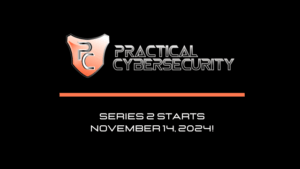Often I’ll talk with small business managers, and they will frequently say something like, “But we don’t have anything valuable. Who would possibly want in our network?”. That’s really a good question. While the results of an attack are somewhat similar, I find it often helps these managers understand the need for cybersecurity when they grasp the different types of attackers that are trying to get into their network.
While there are several possible ways to group potential attackers, I like to categorize them based on their motivation for attacking a network. Using this basis, there are probably six different types of attackers that may be attacking your network.
The Curious
 This is someone who has a sense of adventure and just wants to see what’s out there on the world wide web! The Curious person often doesn’t view what they are doing as wrong, as they simply want to explore and see what they can find. Yet this person can still do damage, and can end up with information that doesn’t belong to them. Being curious isn’t a justification for trespassing on someone else’s computer network!
This is someone who has a sense of adventure and just wants to see what’s out there on the world wide web! The Curious person often doesn’t view what they are doing as wrong, as they simply want to explore and see what they can find. Yet this person can still do damage, and can end up with information that doesn’t belong to them. Being curious isn’t a justification for trespassing on someone else’s computer network!
Mischievous or Bored
 These attackers might be thought of as a bored vandal. With too much time on their hands and lots of digital skills, these attackers simply want to get where they’re not supposed to go to see what they can find and what kind of vandalism they might be able to commit. Defacing a web site, changing an account password, or something more damaging are all within their ability and skills.
These attackers might be thought of as a bored vandal. With too much time on their hands and lots of digital skills, these attackers simply want to get where they’re not supposed to go to see what they can find and what kind of vandalism they might be able to commit. Defacing a web site, changing an account password, or something more damaging are all within their ability and skills.
Hacktivist
 With no end of social or political causes on the digital landscape, the Cause motivated individual uses their skills to further awareness or goals of their favorite cause. Sometimes referred to as a “hacktivist”, the cause oriented attacker sees causing trouble or damage for someone who is an antagonist of their cause as a justifiable means to achieve their desired end.
With no end of social or political causes on the digital landscape, the Cause motivated individual uses their skills to further awareness or goals of their favorite cause. Sometimes referred to as a “hacktivist”, the cause oriented attacker sees causing trouble or damage for someone who is an antagonist of their cause as a justifiable means to achieve their desired end.
Criminals
 This type attacker seems to be becoming more prevalent on the internet. With no limit to the digital ways to commit crime and make money, the criminally motivated individual sees the world wide web as one huge, interconnected, largely unprotected playground in which to commit crime with a low risk of getting caught. Major crime syndicates are becoming bigger and bigger players in this segment. In fact, I’ve actually seen display ads from crime organizations seeking talented programmers!
This type attacker seems to be becoming more prevalent on the internet. With no limit to the digital ways to commit crime and make money, the criminally motivated individual sees the world wide web as one huge, interconnected, largely unprotected playground in which to commit crime with a low risk of getting caught. Major crime syndicates are becoming bigger and bigger players in this segment. In fact, I’ve actually seen display ads from crime organizations seeking talented programmers!
Nation States
 There’s no end of turmoil on the international scene. It seems like every day brings news of another conflict someplace on this globe. And while it used to be that these conflicts were limited to a physical location, in our interconnected age a conflict half way around the world can have digital repercussions right here at home. These attackers are trying to gather information for a military or economic advantage or establish a foothold for a strategic advantage in the event physical hostilities break out. Often these attackers will silently enter a network, establish a foothold, and patiently lurk there for years. Because of the skills these attackers possess, they are often the most difficult attackers to remove from a network.
There’s no end of turmoil on the international scene. It seems like every day brings news of another conflict someplace on this globe. And while it used to be that these conflicts were limited to a physical location, in our interconnected age a conflict half way around the world can have digital repercussions right here at home. These attackers are trying to gather information for a military or economic advantage or establish a foothold for a strategic advantage in the event physical hostilities break out. Often these attackers will silently enter a network, establish a foothold, and patiently lurk there for years. Because of the skills these attackers possess, they are often the most difficult attackers to remove from a network.
Destroyers
 The Sony Pictures breach of 2014 highlighted another aspect of a network breach. News reports of this incident often mentioned that the hackers destroyed data on Sony servers or client computers. At times this destruction seemed to be done just for the sake of destroying. Of course destroyers aren’t limited to just deleting data. In our day, it is possible for an attacker to infiltrate a network and damage physical equipment or even cause loss of life.
The Sony Pictures breach of 2014 highlighted another aspect of a network breach. News reports of this incident often mentioned that the hackers destroyed data on Sony servers or client computers. At times this destruction seemed to be done just for the sake of destroying. Of course destroyers aren’t limited to just deleting data. In our day, it is possible for an attacker to infiltrate a network and damage physical equipment or even cause loss of life.
I know there are other ways to categorize potential attackers. However understanding something of what motivates the bad guys to get into our networks helps us understand better what we need to do to protect our network. Feel free to contact us if we can help you improve your cybersecurity stance.
Practical Cybersecurity Webinars
Learn practical information your business or organization can put to use to improve your cybersecurity stance with the short, monthly webinars.
- Lost Laptops & Stolen Cells
What to do about lost devices - Cybersecurity Spelled Out
CIS Critical Controls® - The High Cost of Cheap Email
Is your budget solution putting you at risk? - Your Digital Doppelganger?
Lost of hackers would love to be you! - No Man Is An Island
Why security culture matters! - Friends, Followers, and Frauds
The unfriendly side of social media
Registration is FREE!






